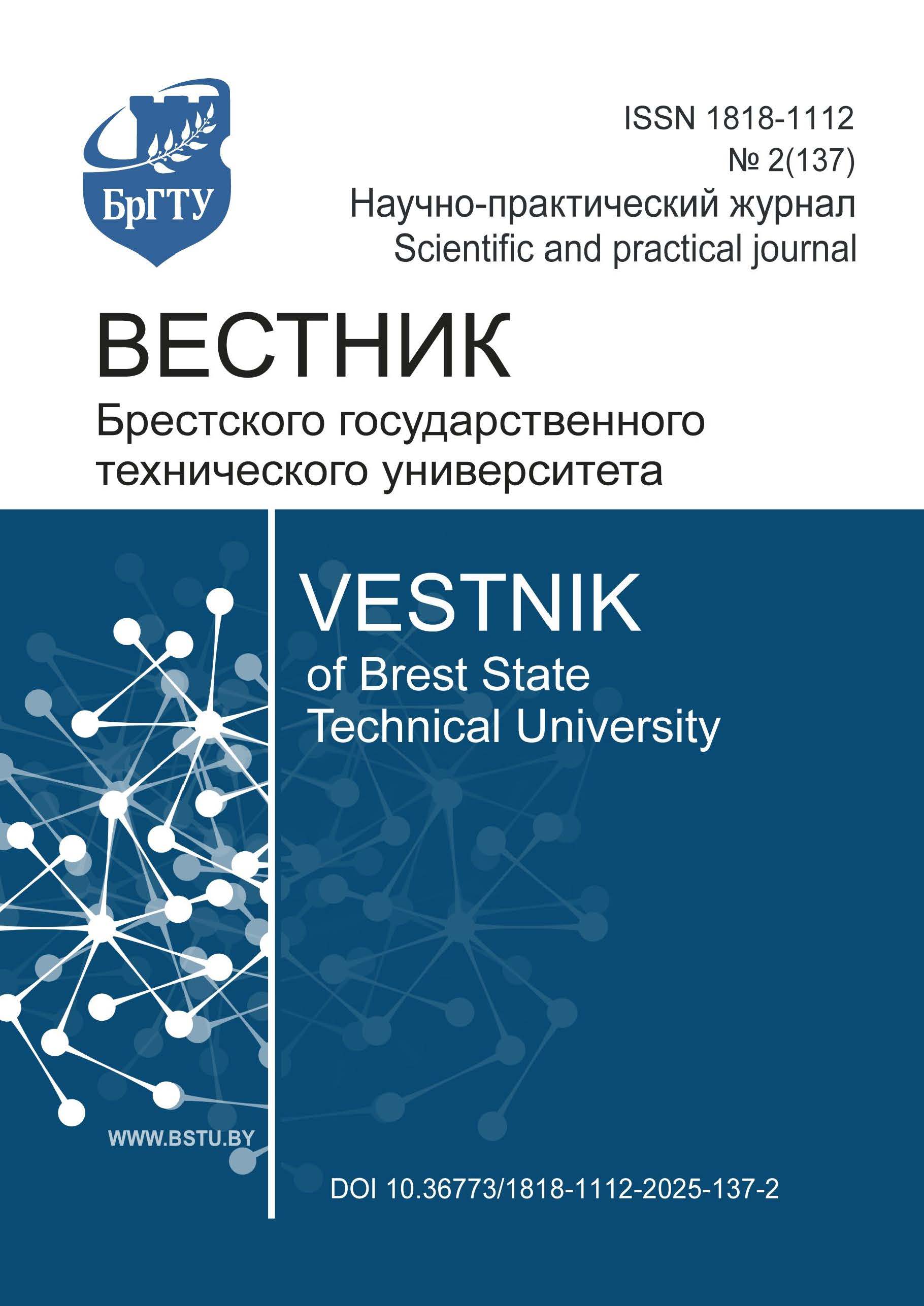AN INNOVATIVE MODEL OF THE HEA COMPETITIVENESS MANAGEMENT SYSTEM
DOI:
https://doi.org/10.36773/1818-1112-2025-137-2-213-216Keywords:
geopolitical instability, UVO, innovative model, competitiveness (Ksp), competitiveness management system of UVO (CUCSp UVO), component, subsystem, scientific support, target, supporting, managed, controlAbstract
One of the promising areas for increasing the efficiency of domestic higher education institutions (HEIs) in the current crisis conditions is the creation of an innovative model of the HEI competitiveness management system (IMCS HEI).
The research was carried out according to proven methodological recommendations within the framework of the implementation of complex research end-to-end tasks (CRCT); practical classes for students; the work of student research circles; and courses for training (retraining) specialists.
As a result of the research, the ICS HEI model was developed and modified to suit the existing external conditions, aimed at activating the activities of the managed object and possessing a high level of innovative activity to overcome existing geopolitical challenges. It includes two interconnected components that interact with each other.
The first component is the external environment, which includes input data, output results, feedback and communication with the external environment. The work provides a detailed decomposition and analysis of the components of the external environment of the ICS HEI model in accordance with modern realities.
The second component, known as the "black box", is an internal structure that includes interconnected components that ensure the impact of management entities on the object, the transformation of input data into output data and the achievement of the goals of the ICS HEI model. This component also includes modified subsystems (changed to suit modern realities): scientific support, target, supporting, managed and control subsystems, which will be developed in more detail in subsequent publications.
Thus, the developed model of the ISUKsp UVO is based on the interconnected components of the external environment and internal structure, providing the opportunity for more effective management and achieving goals in the face of modern challenges.
The article is a logical continuation of the authors' work "Innovative system of training and maintenance decision-making", published in the 3rd edition of 2024. Vestnik of BrSTU.
References
Концепция национальной безопасности Республики Беларусь. –URL: https://www.mil.by/ru/military_policy/basic/koncep (дата обращения: 10.01.23).
Шимов, В. Н. Перспективы развития высшей школы Беларуси: поиск ответов на новые вызовы / В. Н. Шимов, Л. М. Крюков // Бел. эконом. журнал. – 2015. – № 3. – С. 79–103.
Ровба, Е. А. Инновационная бизнес-модель для классического университета: стратегия успеха как ответ на вызовы современности / Е. А. Ровба // Выш. школа. – 2016. – № 4. – С. 29–33.
Оценка качества образования: кто, как, когда и для кого может и должен его оценивать / Е. А. Ровба, Е. Л. Разова, С. Н. Щербинин, Ю. Л. Федосова // Выш. школа. – 2015. – № 2. – С. 13–17.
Фатхутдинов, Р. А. Управление конкурентоспособностью вуза / Р. А. Фатхутдинов // Высш. образов. в России. – 2006. – № 9. – С. 37–41.
Головачёв, А. С. Конкурентоспособность организации: учеб. пособие / А. С. Головачёв. – Минск : Выш. шк., 2012. – 319 с.
Немогай, Н. В. Конкурентоспособность предприятия: учебник / Н. В. Немогай, Н. В. Бонцевич. – 3-е изд., перераб. и доп. – Минск : РИВШ, 2023. – 524 с.
Немогай, Н. В. Модель системы управления конкурентоспособностью предприятия / Н. В. Немогай, С. Д. Колесников // Стандарты и качество. – 2020. – № 6. – С. 88–93.
Колесников, С. Д. Конкурентоспособность учреждения образования: системно-процессный подход / С. Д. Колесников, Н. В. Немогай // Веснiк Магiлёўскага дзяржаўнага універсітэта імя А. А. Куляшова. – 2020. – № 1 (55). – С. 24–30.
Колесников, С. Д. Конкурентоспособность учреждения образования: системно-процессный подход, подсистема научного обоснования / С. Д. Колесников, Н. В. Немогай // Веснiк Магiлёўскага дзяржаўнага універсітэта імя А. А. Куляшова. – 2020. – № 1 (55). – С. 34–40.
Немогай, Н. В. Роль обеспечивающей подсистемы в управлении конкурентоспособностью предприятия / Н. В. Немогай, С. Д. Колесников // Стандарты и качество. – 2023. – № 1. – С. 98–103.
Фатхутдинов, Р. А. Управление конкурентоспособностью организации: учебник / Р. А. Фатхутдинов. – М. : Маркет ДС, 2008. – 432 с.
Философова, Т. Г. Конкуренция. Инновации. Конкурентоспособность / Т. Г. Философова, В. А. Баков. – М. : Юнити-Дана, 2013. – 296 с.
Новикова, И. Государственно-частное партнёрство-мода или тренд / И. Новикова // Эконом. Беларуси. – 2013. – № 1. – С. 48–54.
Шимов, В. Н. Движущие силы инноваций и «ловушки развития». Инновационное развитие экономики Беларуси: движущие силы и рациональные приоритеты / В. Н. Шимов, Л. М. Крюков. – Минск : БГЭУ, 2014. – 276 с.
Шимова, О. С. Экологические проблемы и жизненные условия / О. С. Шимова // Беларусь: выбор пути. Национальный отчет о человеческом развитии 2000. – Минск : UNDP, 2000. – С. 76–83.
Шмарловская, Г. А. Конкурентоспособность Республики Беларусь в мировой экономике / Г. А. Шмарловская // Бел. эконом. журнал. – 2016. – № 1. – С. 22–41.
Экономика организации (предприятия): учеб. пособие / Л. Н. Нехорошева, Е. С. Романова, Э. Хостилович, А. П. Морова ; под ред. Л. Н. Нехорошевой. – Минск : БГЭУ, 2014. – 573 с.
Экономический механизм развития предприятия: учеб. пособие : в 2 ч. / С. А. Пелих, И. В. Бачило, Ф. Ф. Иванов, С. И. Прокопненко ; под общ. ред. С. А. Пелиха. – Минск : Академия управления при Президенте Респ. Беларусь, 2006. – Ч. 2: Организационно-экономический механизм рыночной адаптации предприятиями. – 271 с.
Юданов, А. Ю. Конкуренция: теория и практика: учеб. пособие / А. Ю. Юданов. – М. : Гром-Пресс, 2002. – 365 с.
Яшева, Г. А. Методология формирования и оценки системы управления конкурентоспособностью / Г. А. Яшева // Маркетинг. Реклама и сбыт. – 2003. – № 8. – С. 21–30.
Downloads
Published
How to Cite
Issue
Section
License

This work is licensed under a Creative Commons Attribution-NonCommercial 4.0 International License.
The work is provided under the terms of Creative Commons public license Attribution-NonCommercial 4.0 International (CC BY-NC 4.0). This license allows an unlimited number of persons to reproduce and share the Licensed Material in all media and formats. Any use of the Licensed Material shall contain an identification of its Creator(s) and must be for non-commercial purposes only. Users may not prevent other individuals from taking any actions allowed by the license.










